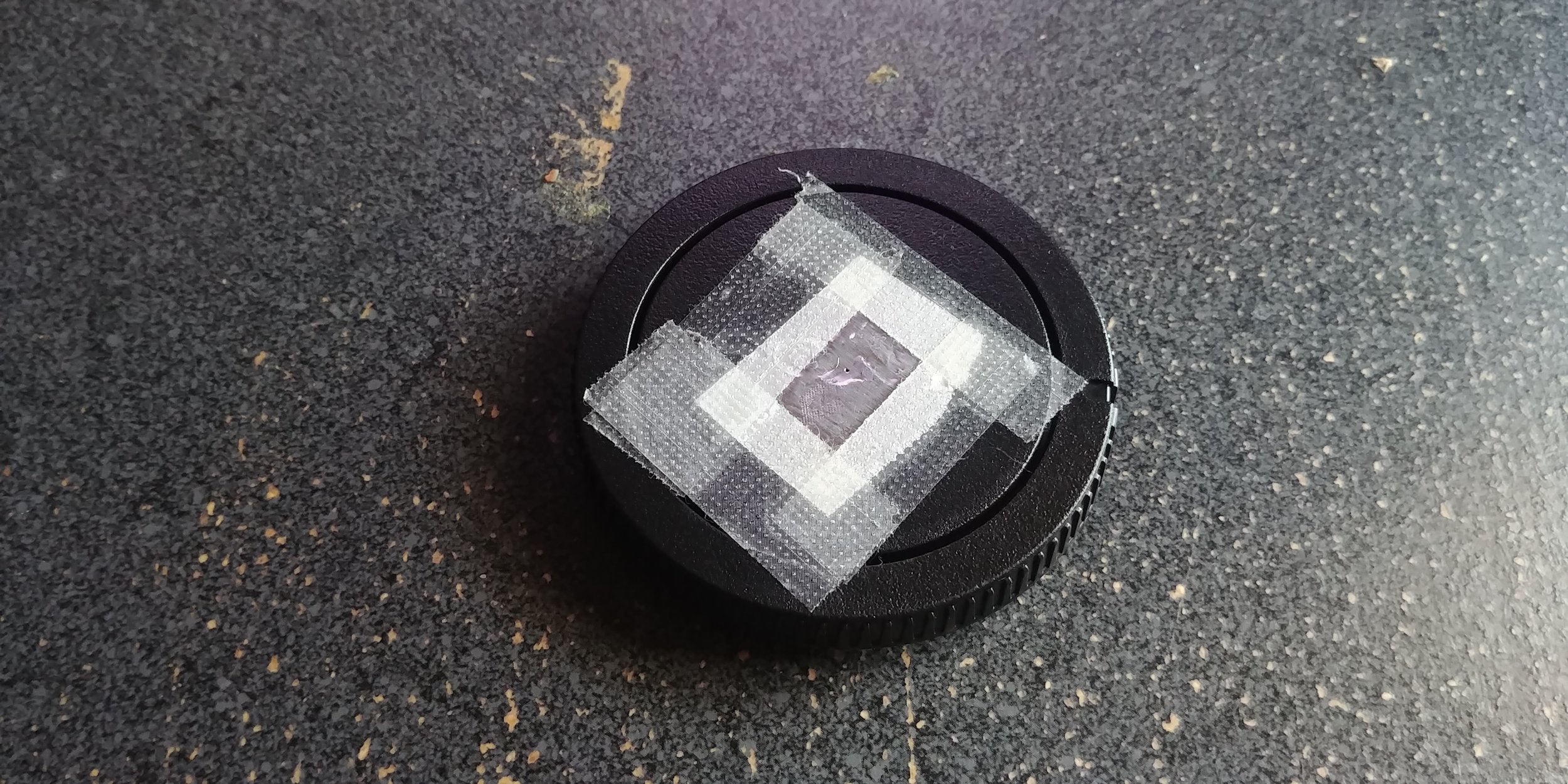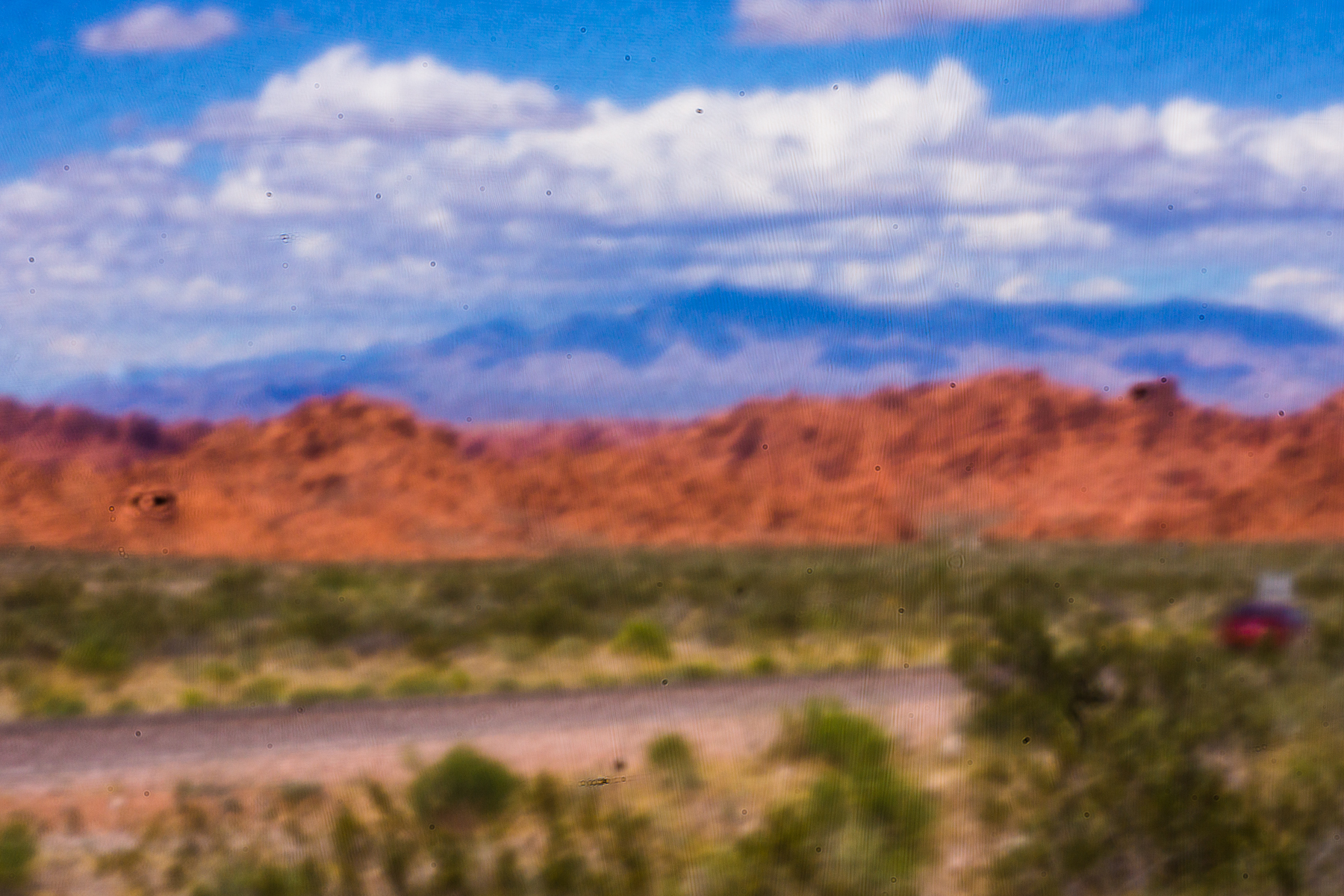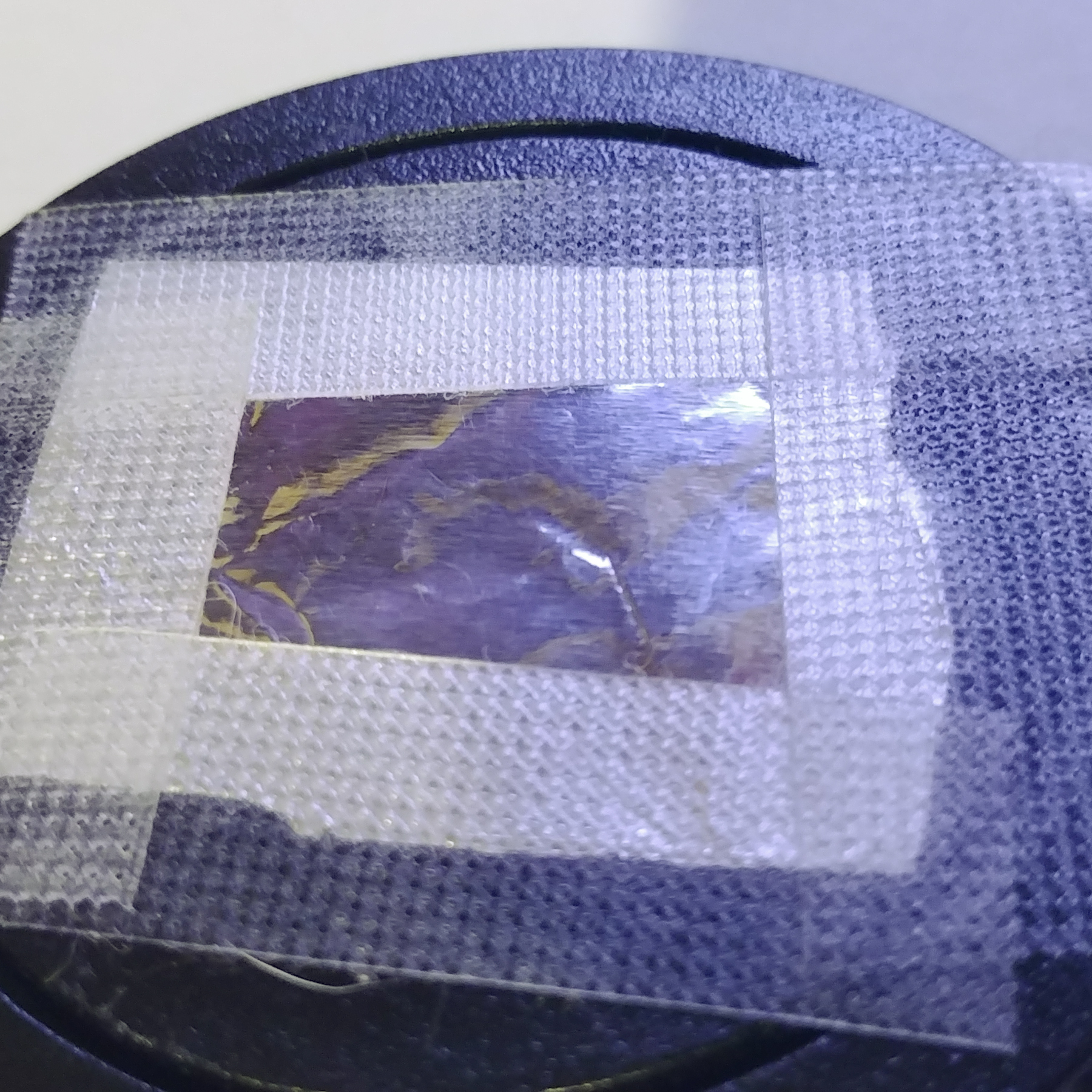Today I am going to talk about pinhole cameras and go over how I changed my camera cover into one.
To start a pinhole camera is basically a tiny hole that takes the place of the lens and has been around for longer than photography. It used to be used as a drawing aid, and later was used with film and light sensitive paper. Now when I say a tiny hole I am not talking about f22 or f32 I am talking around f160-f200.
My DIY pinhole “lens”
With the aperture being so small the images generally turn out blurry because of the high diffraction. Diffraction in photography is basically light waves interfering with or bouncing off of each other because they are all trying to get through a small opening. It is way more complicated than that but that idea should suffice for my purposes here.
Valley of Fire State Park taken near the West entrance with the pinhole. With the size of the hole I made it is around an f200 and around 60mm this exposure was 1/5
The same view a couple of minutes later at 60mm and f8 1/400. There is a 13 stop difference between the two
The pinhole, I feel is more like an Impressionistic painting than a photograph. One other thing with the pinhole is that if there is any dust on the sensor it will be very visible.
The pinhole cap that I have is old and beat up so I am going to redo it taking snaps along the way to show how it is done.
On to the making of one. Supplies needed are 1) a camera body cap 2) a drill with a 1/4 inch or so bit 3) fine grade sandpaper 4) foil 5) small gauge needle 6) tape
To start drill the hole in the center of the cap (it doesn’t need to be exact but get it close as you can) and sand off the rough edges (which can be seen on mine). Wash it and let it dry while getting everything else.
Cut a piece of foil big enough to cover the hole and then some.
Tape it down tight, I have used medical tape and electrical tape. Electrical tape is better looking in my opinion any long lasting tape will work. If you run your finger over the foil an outline of the hole should appear.
After finding the smallest pin or needle that you can get your hands on, insulin and subcutaneous needles work well they are less than half a mm this is a 27G needle which is 0.4mm hole, gently poke a perpendicular hole as close to the center of the body cap as you can.
Put it on you camera and try it out.
It’s fun and gives a different look and feel for photography. If you try it share your pictures I would like to see them.
~Scott W Gonzalez






